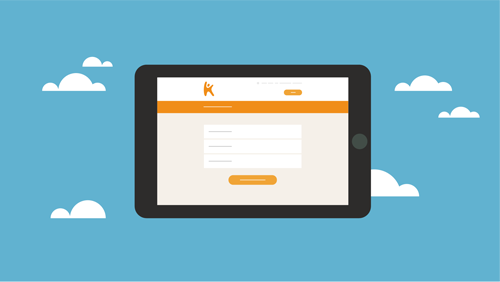5 Benefits of Moving to Cloud-Based Medical Software
 For medical practices considering a software overhaul (or a move to EHR), the upfront cost and implementation required by a new system can seem insurmountable. That’s especially true if you run a small practice.
For medical practices considering a software overhaul (or a move to EHR), the upfront cost and implementation required by a new system can seem insurmountable. That’s especially true if you run a small practice.
One solo practitioner in Washington State spent over $40,000 on an EHR implementation, only to see her patient numbers (and revenue) suffer. The good news is, there’s an alternative for practices that want to modernize. Cloud-based medical software offers the same functionality as its server-based rival in a more flexible, cost-effective package. ![]()
It’s no wonder thousands of practices have already moved their software, data, and security to the cloud. According to a 2014 survey by HIMSS Analytics, 86% of healthcare organizations say they’re already using cloud services, and 67% say they’re using software-as-a-service (SaaS) applications.
The report indicates the three most common uses of cloud technology in the medical sector are:
- Hosting of clinical applications and data
- Health information exchange
- Backup and data recovery
There are many different applications you can run in the cloud, from practice management to billing, e-prescribing, and EHR. In some cases, a vendor may even offer a cloud-based suite containing several of these.
But why should you switch to the cloud? Why not install something on your own server and manage it in-house? Because you’ll be missing out on the innumerable benefits of managing healthcare through SaaS. Consider these five:
- Minimized Upfront Cost: Though it can vary depending on the application, most cloud software is licensed on a subscription basis, which means instead of paying thousands of dollars for a perpetual license, you pay a fee for access per month — hence the term, “software-as-a-service.” Since cloud applications are hosted remotely, there are no physical server requirements, which means implementation also goes faster and costs less. According to a 2013 cloud study by Microsoft, 70 percent of businesses have saved money by moving operations to the cloud.
- Increased Mobility and Collaboration: Rather than installing software on a physical hard drive, cloud applications are typically accessed by logging in through a web portal. That means doctors, staff, and in some cases, patients, can all access the information they need from any location and device. Whether you’re in the office, traveling, or administering an at-home visit, cloud software helps you maintain continuity of care by staying connected to patient and procedural data. Mobile access is especially important when it comes to communication. It’s important for doctors and patients to be able to exchange messages through a secure, HIPAA-compliant platform from any location.
- Real-Time Access to Data: Server-based EHRs and other on-premise medical systems require a lot of manual syncing, uploading, and back-up to keep data up to date. A cloud-hosted system, on the other hand, ensures all of your data will stay synced in real-time across every device. When you’re making decisions that affect serious clinical outcomes for your patients, accurate data is critically important; don’t trust it to an offline spreadsheet or a system that gets updated once a day.
- Outsourced IT Maintenance: When you subscribe to a cloud-based application, the vendor usually agrees to manage all IT maintenance, including bug-repair, updates, patches, and security. That can make a huge difference for a smaller practice with limited (or no) IT resources — saves time, saves money, frees your staff to focus on delivering care and improving the patient experience. Roughly 60 percent of companies say that cloud technology has reduced the need for their IT team to maintain infrastructure. Outsourced IT maintenance also brings peace of mind when it comes to security. When you compare medical software, look for vendors that maintain enterprise-grade, HIPAA compliant security through encryption and regular back-up. You won’t have to worry about losing sensitive patient data in the event of a natural disaster or firewall breach.
- Scalability: If you expect your practice to grow in the future (expanded patient population, more staff, a larger payer network, etc.), it’s important to choose a product that can expand with your needs and budget. Most SaaS products are priced based on the level of functionality enabled and the number of stated users (for medical solutions, the language might be “per provider”). That means instead of spending thousands of dollars to lock yourself into a product that may or may not fit your needs next year, you can adjust your level of access and features as necessary.
Let’s be honest. If you’re reading this article, you’re probably already considering a move to cloud-based software. But you may have invested a lot in your current solution, so don’t take the decision lightly: gather the necessary stakeholders and figure out how much a cloud solution could save your practice each month, after operational expenses. You’ll also need a plan for data migration—moving your current health data to the new system.
Whether it be an EHR, a practice management system, medical billing, or some combination of the three, cloud software will almost always provide greater flexibility and streamlined access with a lower cost burden.




















